The iPhone 5 Review
by Anand Lal Shimpi, Brian Klug & Vivek Gowri on October 16, 2012 11:33 AM EST- Posted in
- Smartphones
- Apple
- Mobile
- iPhone 5
Camera: Thinner, Faster, Better Low-Light
Section by Brian Klug
The iPhone 4S represented probably the single biggest leap in camera performance for Apple in the progression of iPhone. The combination of an 8 MP CMOS with 1.4 micron square pixels, F/2.4 optics, and Apple’s own ISP resulted in a great overall performer for its class. We made the prediction early on that optical performance would remain roughly the same with the next iPhone, and that largely turned out to be the case. With the iPhone 5, Apple’s major design guideline seems to have been reducing z-profile, and probably one of the biggest obstacles to getting to that goal was reducing the thickness of the entire camera system. In fact, getting to a thinner optical system with the same performance characteristics is quite a challenge.
Superficially the iPhone 5 camera specifications are almost unchanged. We’re still talking about 1.4 micron pixels (roughly two waves in the red), not the smaller 1.1 micron pixels that are in the cards for the future. F-number remains at 2.4, and total pixel count is still 8 MP. Focal length is shorter, as expected (this is a thinner system, after all), resulting in a slightly wider field of view. I’ve made a table with the relevant specifications for the iPhone 5 cameras.
| iPhone 4, 4S, 5 Cameras | ||||
| Property | iPhone 4 | iPhone 4S | iPhone 5 Rear | iPhone 5 Front |
| CMOS Sensor | OV5650 | IMX145 | IMX145-Derivative | OmniVision |
| Sensor Format | 1/3.2" (4.54 x 3.42 mm) | 1/3.2" (4.54 x 3.42 mm) | 1/3.2" | ~1/6" (~2.6 x 1.6 mm) |
| Optical Elements | 4 Plastic | 5 Plastic | 5 Plastic | ? |
| Pixel Size | 1.75 µm | 1.4 µm | 1.4 µm | 1.75 µm |
| Focal Length | 3.85 mm | 4.28 mm | 4.10 mm | 2.2 mm |
| Aperture | F/2.8 | F/2.4 | F/2.4 | F/2.4 |
| Image Capture Size | 2592 x 1936 (5 MP) | 3264 x 2448 (8 MP) | 3264 x 2448 (8 MP) | 1280 x 960 (1.2 MP) |
| Average File Size | ~2.03 MB (AVG) | ~2.77 MB (AVG) | ~2.3 MB (AVG) | ~420 KB (AVG) |
That’s not to say that there haven’t been changes made to the rear facing camera performance, however. Apple talked about dramatically improved low light sensitivity thanks to a low light boost mode. As we’ll show later this does make a big change in overall sensitivity thanks to the combination of 2x2 pixel binning at ISO 3200 to keep noise under control, and better fixed pattern noise rejection on their ISP.
Apple claims that this is an entirely new ISP, oddly enough I found that the interface is still named the same (AppleH4CamIn ISP) as what I found on the 4S, but I don’t doubt that there have been at least some tweaks, though unfortunately this is still relatively opaque without lots of digging. During the keynote, Apple claimed that image capture is now 44 percent faster than the 4S thanks to this improved ISP. The improvement is actually hard to measure, the iPhone 5 doesn’t have a burst mode, instead capturing quickly requires tapping as fast as you can. Shot to shot latency is essentially zero on the iPhone 5, gated only by how fast I can tap. I put together a short video comparing the 4S and 5.
The camera launches faster, HDR images capture quicker, all around the iPhone 5 camera experience is just smoother and faster, which isn't a surprise.
| Camera Performance Comparison | ||||
| Property | iPhone 3GS | iPhone 4 | iPhone 4S | iPhone 5 |
| Camera Launch Time (seconds) | 2.8 | 2.3 | 1.4 | 1.2 |
| HDR Capture Time (seconds) | - | 4.9 | 3.2 | 1.6 |
| Working Distance (cm) | - | 7.0 | 6.5 | 6.1 |
Apple has once again gone with a Sony CMOS for the rear camera, though this time (thanks to Chipworks) we know it ditched the IMX145 markings. Apple is frequently able to have its suppliers make specific one-offs with changes just for themselves, it’s highly likely that’s the case here. I have almost no doubt that the changes made to IMX145 accommodate this extremely high ISO (3200 is almost unheard of for that size pixels due to noise) with some tweaks to the amplifier in each active pixel (which is what we really mean when we talk about a CMOS versus a CCD). Either way I have no doubt time will tell that this is an IMX145 derivative with some tweaks to both aide the low light boost mode, and also possibly get to Apple’s desired chief ray angle if IMX145 couldn’t do it already. Unfortunately like so much in the smartphone space there’s very little in the way of open documentation for IMX145.
Apple claims that they’re aligning optical elements with even tighter tolerances now, which does make a big difference in the kinds of optical design tolerances available. There’s also a sapphire front window in the place of what was previously just optical glass. Sapphire of course has an extremely high surface hardness second only to diamond, in addition to excellent chemical resistance, and good transmittance. The real advantage here is again one of thickness — you can run thinner sapphire windows in the place of standard glass windows and get better transmittance. Sapphire windows in optical systems are colorless and chemically composed of single crystal aluminum oxide (Al2O3). Upon inspection the iPhone 5 sapphire does indeed appear to have an antireflection coating as well.
The story on the front facing camera is actually one of dramatic improvement. The iPhone 4 was the first iPhone to include a VGA front facing camera, which remained the same on the iPhone 4S as well. That system was arguably good enough for FaceTime which seemed its original reason for existing, but finally gets updated to 1280 x 960 on the iPhone 5. That particular CMOS is an OmniVision part with 1.75 micron pixels and topped with an F/2.4 optical system. Images captured on the front facing camera are dramatically better, and video is 720p now.
Before we talk about image quality though I’d like to make brief mention about user experience on the iPhone 5 camera. I touched on how the interface is even faster than the 4S thanks in part to faster A6 silicon and improved ISP onboard, and Apple continues to make things very minimalist with virtually no options for changing shooting modes manually or configuring ISO. In addition, every image taken on any Apple camera is at the highest resolution and compression mode, always. Essentially all of this functionality is abstracted away from the user leaving the shooting experience fully auto all the time. This includes the low light boost mode which kicks in below a certain threshold.
What’s puzzling about the iPhone 5 user experience is that the aspect ratio of the viewport no longer matches the aspect ratio of the CMOS or the end images. This is done purely for aesthetic reasons as far as I can tell, because of the extreme letterboxing that would happen with a 16:9 viewport and 4:3 image size. Instead of going ahead and giving you that letterboxed but 100 percent field of view preview, Apple instead crops off the top and bottom and presents a roughly 3:2 image in the preview screen.
I encountered this somewhat unexpectedly while taking images of the ISO12233 chart and trying to align the chart with the 4:3 CMOS, only to be thoroughly confused to the point of questioning my basic math skills until I realized the preview was a crop of the real image area. As of this writing in iOS 6.0 there is no way to double tap on the preview and get an aspect-correct, 100 percent preview with letterboxing like you could do with 16:9 video in video capture mode. Instead, you’re just always locked to an absurd 3:2 center crop of a 4:3 image. This makes absolutely no sense to me and will always result in image composition in the preview screen that looks nothing like the end result. I sincerely hope an update adds a double tap gesture that will give an actual 4:3 preview. Another new thing I noticed on the iPhone 5 is that if you let the phone get too hot it will disable the LED flash until the device cools down. I have never seen this behavior on the 4 or 4S.
Lastly, iOS 6 adds a panorama mode to both the iPhone 5 and iPhone 4S which actually has been lurking around hidden in iOS for some time now. Panorama mode in iOS continually integrates over the field of view, first for the full field, later over a small center strip until you reach the end. The mode produces results that are at maximum 10800 pixels wide and around 2590 pixels tall depending on if you swept through the horizontal field of view without any shift. In addition the mode supports portrait panoramas if you rotate the camera 90 degrees and scan upwards.
I stuck my iPhone 4S, iPhone 5, HTC One X and Samsung Galaxy S 3 in the dual camera bracket and took a number of panoramas for comparison purposes. There’s a surprising amount of difference between the approaches I see handset vendors taking for panorama. The One X takes a few exposures and stitches them together, Galaxy S 3 does continual integration but produced strangely blocky results. iOS continually stitches a small center strip together as I mentioned already.
Still Image Quality Evaluation
To evaluate still image quality we turned to our standard set of tests which seems to keep growing. That consists of a scene in a lightbox with constant controlled illumination of 1000 lux taken using the front and rear cameras with as close to the same field of view as possible, images of a distortion grid, GretagMacbeth ColorChecker card for white balance checking, and an ISO12233 test chart for gauging spatial resolution in an even more controlled manner. Because I’ve moved houses and lighting will never ever be exactly the same, I have decided to move the three test charts into my lightbox as opposed to putting them on a wall and illuminating them with studio lights. This warrants a completely new set of comparison images, hence the smartphone 2012 camera bench for the three charts and front facing camera.
Let’s start with what’s most objective first, the tangential and saggital spatial frequency crops. You can really see here that Apple’s camera design team kept performance roughly the same between the 4S and 5, I can count up to roughly 16.5 (100x lines per image height) on both devices. Samsung Galaxy S 3 appears to also be around 16, along with the HTC One X. The iPhone 4 and Galaxy Nexus are at a huge disadvantage with their 5 MP CMOS, I can see up to 15 or so before there’s a contrast reversal from us crossing through MTF of 0. The PureView 808 actually outresolves the test chart at full size and at the 8 MP on-device oversample, obviously you can’t beat that device with just an 8 MP CMOS.
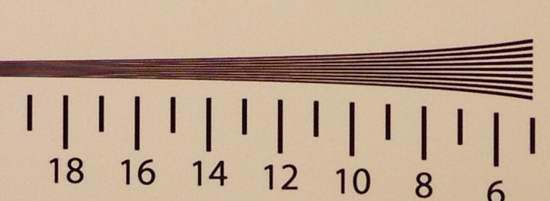

The tangential frequency crops basically tell the same story which isn’t a surprise. It’s shocking how close the iPhone 4S and 5 are here. I strongly suspect that team was basically ordered to keep MTF the same and just reduce the thickness of the 4S-era optical system. You can look at the 100 percent size versions of the tangential and saggital crops as well rather than these which are resized to 600 pixels wide maximum to fit online.
From the rest of the test charts we can see the iPhone 5 has slightly more pincushion distortion than the 4S in the distortion chart, but not a whole lot. It is also evident from the GMB chart and other photos that I’ve taken over my time with the iPhone 5 that the revised ISP also has better auto white balance.
The remainder of the well-lit tests really tell the same story. In outdoors lighting (with both cameras automatically selecting the same ISO and exposure time) I can’t find any major difference in camera performance between the 5 and 4S, they’re very close. Apple also changed the LED diffuser design with iPhone 5, it is visibly different and now results in a much more even field of illumination in the lights-off lightbox test.
On the front facing camera the increase in resolution and overall quality is dramatic, however.
It is in low light performance that the 4S and 5 radically diverge thanks to the low light boost mode which kicks in automatically at a preset threshold on the iPhone 5. You can tell when this happens just looking at the preview since there’s a dramatic shift all of a sudden in exposure. The iPhone 5 does a 2x2 pixel bin, then upscales that image to the same full size resolution as normal 8 MP capture (3264 x 2448). The result is a tradeoff in spatial resolution for lower noise and an exposure without integration time that’s inordinately long. According to EXIF, the iPhone 4 will do a maximum ISO of 1000 and 1/15th of a second, the 4S will do a maximum of ISO 800 and 1/15th of a second, and finally the iPhone 5 will do between ISO 1600 and ISO 3200 and 1/15th of a second. The difference is quite dramatic as expected.

I took samples in the lightbox at a controlled 4 lux with the phones I selected for shooting with the test target and selected low light modes wherever possible in the camera UI. On the PureView 808 I manually forced the maximum ISO of 1600 since there is no low light preset. The resulting image from the PureView isn’t a mistake, that’s what it actually looks like in full and PureView modes. It’s interesting to see how the different cameras handle this extreme low light. The Samsung Galaxy S 3 shoots at ISO 640 and integrates over a full half second to produce its result, PureView 808 takes ISO 1600 which I set and integrates over a full second (according to EXIF), the One X goes to ISO 1200 and doesn’t report how long it integrates, meanwhile all three iPhones select a maximum exposure time of 1/15th of a second and their respective maximum ISOs. Considering the exposure times of some of those cameras are far too long to hand hold (I use a tripod for these comparisons) I would say that Apple setting a maximum 1/15th of a second makes a lot of sense.
Before we depart still image quality entirely I think it’s worth visiting the evolution of all the iPhones, from the original generation of iPhone, to the latest and greatest iPhone 5. We’ve come along way in a short time since 2007, from 2 MP cameras that basically crammed a webcam module into a smartphone to 8 MP shooters with custom optics and ISP that are now arguably good enough to take the place of a point and shoot. Things haven’t entirely plateaued yet either.

| iPhone Cameras | ||||||
| Property | iPhone | iPhone 3G | iPhone 3GS | iPhone 4 | iPhone 4S | iPhone 5 |
| Focal Length | ? | ? | 3.9 mm | 3.85 mm | 4.28 mm | 4.10 mm |
| Aperture | F/2.8 | F/2.8 | F/2.8 | F/2.8 | F/2.4 | F/2.4 |
| Image Capture Size | 1600 x 1200 (2 MP) | 1600 x 1200 (2 MP) | 2048 x 1536 (3.1 MP) | 2592 x 1936 (5 MP) | 3264 x 2448 (8 MP) | 3264 x 2448 (8 MP) |
| Average File Size | ~650 KB | ~700 KB | ~1.2 MB | ~2.03 MB (AVG) | ~2.77 MB (AVG) | ~2.3 MB (AVG) |
| Test Image Full Size | Link | Link | Link | Link | Link | Link |
Purple Haze
The final thing I’d like to talk about regarding still image capture on the iPhone 5 is the so called “purple haze” purple glare which sometimes appears with a bright light source placed just outside the field of view of the camera. When this started getting public attention many assumed that it was the result of light somehow picking up purple from the sapphire cover glass. I guess this assumption was the one people settled on quickly because most sapphire gemstones are purple in appearance? Regardless, the reality as I touched on earlier is that optical grade sapphire windows for either expensive wristwatches or camera systems impart no color on light passing through them. In fact, when I saw this I actually immediately tweeted that this was merely a matter of some stray light bouncing around inside the camera module and probably picking up a purple cast probably from some magnesium fluoride (Mag-Flouride is a very common AR coating choice that looks purple) or other antireflection coating. Note that these coatings are designed to work on a limited range of acceptance angles, from some angles they can indeed reflect, in spite of the name.
The iPhone 5 does exhibit this a bit more than the 4S, but such is to be expected given the wider field of view and larger chief ray angle. Most photographers are used to using either a lens hood or simply shielding cameras with their hand to block stray light from reflecting around inside an optical system and creating this type of glare, and obviously in the case of a smartphone there really isn’t any possible way people are going to attach either baffles or a lens hood (maybe there’s a market for that, though). Note that it is not correct to call this a chromatic aberration, insofar as it is just light that has picked up some color.
The two circular purple artifacts are clearly reflections
I captured two great photos which to me conclusively prove this is an internal reflection of some kind (in case you don’t believe the Apple support statement which parrots what I’ve said already). The first photo shows the purple flare that most see, in the second photo I’ve tilted the phone down slightly and the purple now shows up as two circles which to my optical engineering eyes instantly look like two visible reflections. I was actually going to set up an optical bench and track the angle until I stumbled upon this while playing with the camera during a late night trip to CVS. Again, all of this is easily mitigated by blocking the stray light.


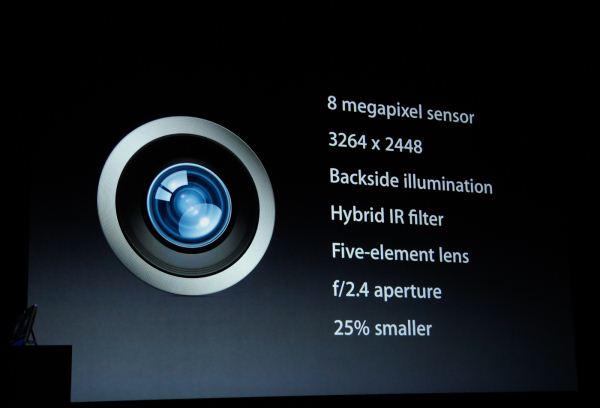
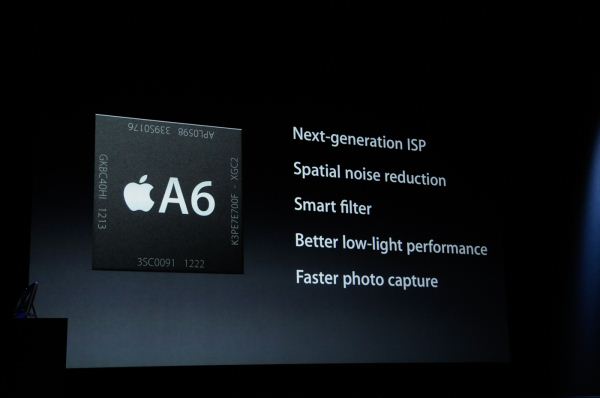

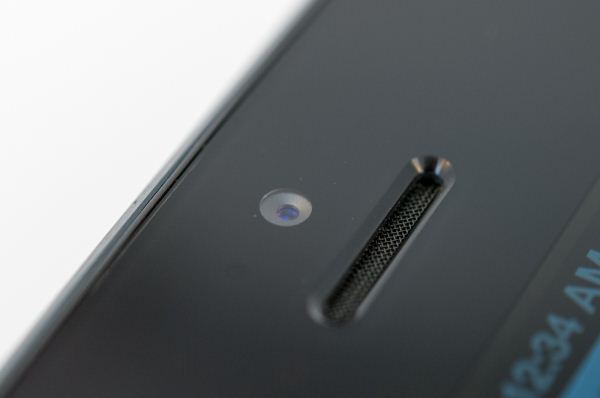
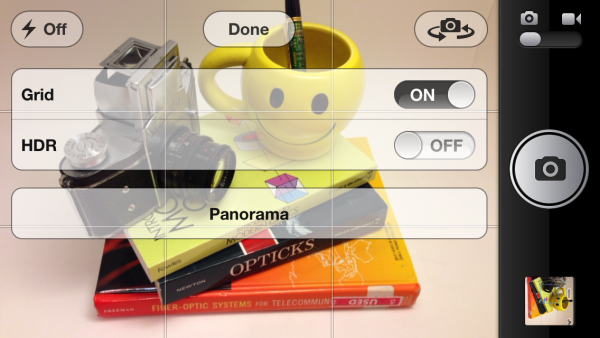
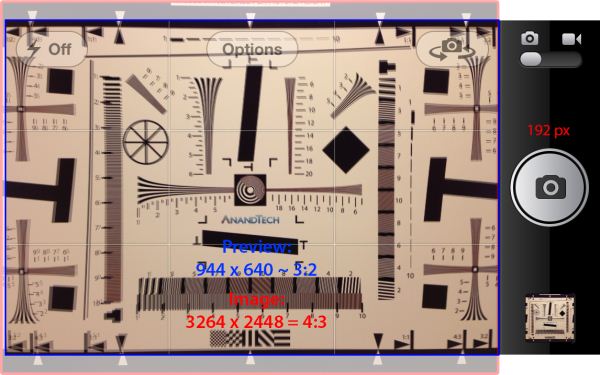
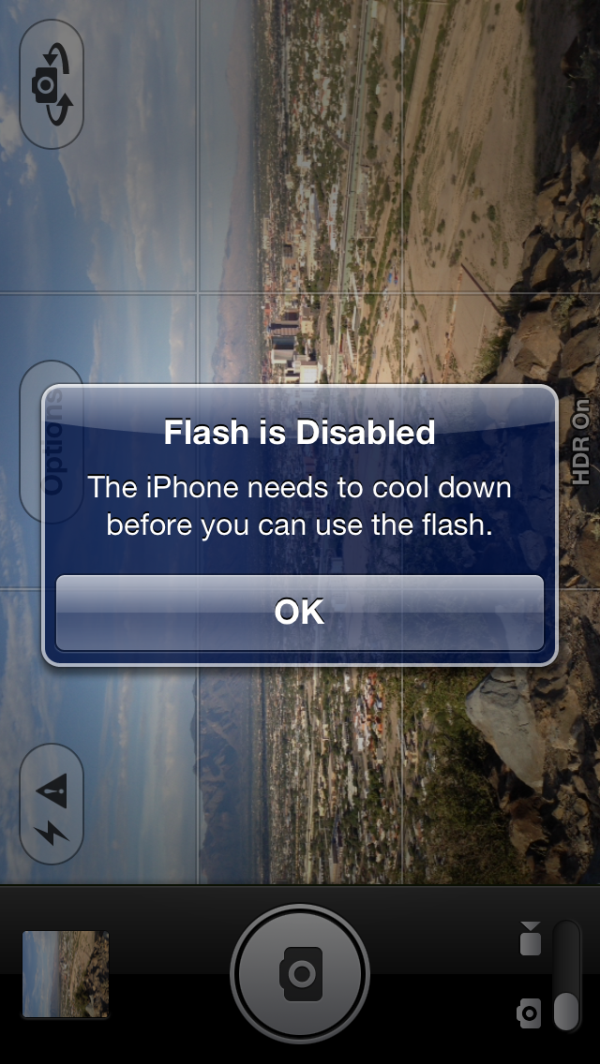
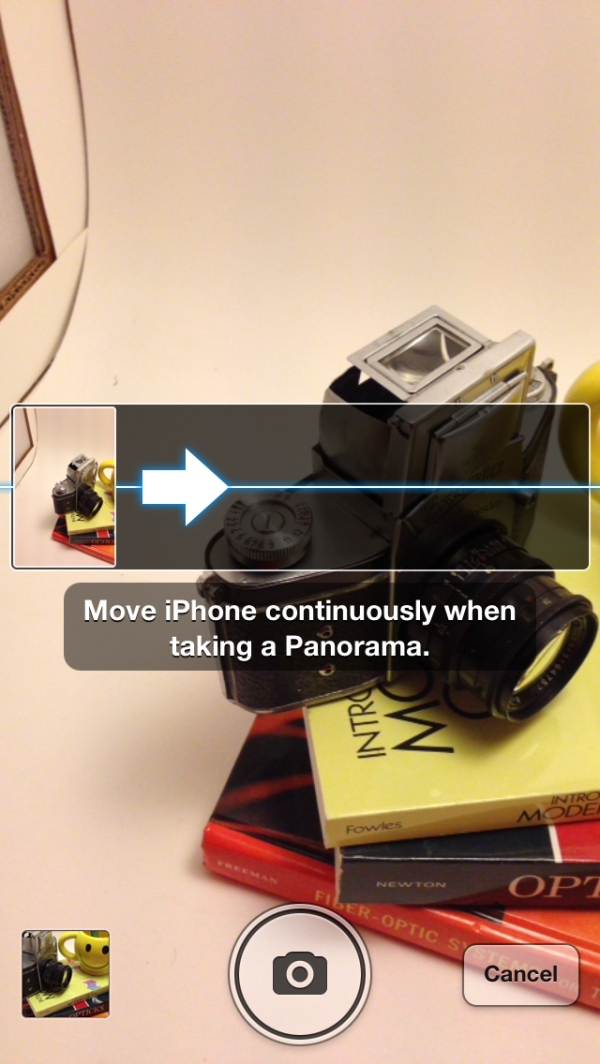




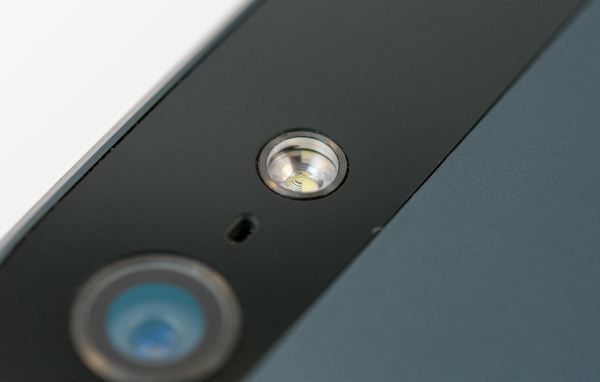





































































276 Comments
View All Comments
name99 - Wednesday, October 17, 2012 - link
If you want to read non-technical reviews, there are a million other sites you can go to, from NYT and WSJ to Engadget and TheVerge.The WHOLE POINT of people reading Anand's reviews is to get tech details we don't get elsewhere.
Perhaps as a followup you might want to suggest that John Siracusa in future limit his OSX reviews to a single letter-sized page?
rarson - Wednesday, October 17, 2012 - link
No, it's not the "WHOLE POINT," the whole point is that reviews are reviews and tech articles are tech articles.GotThumbs - Tuesday, October 16, 2012 - link
"Those longing for an HTC One X or Galaxy S 3 sized device running iOS are out of luck. "I find it hard to believe there is even one person that is in this group. Apple's walled garden is mostly OS and portal based (Itunes).
Especially with Apples maps being sub-standard.
Please stick to facts.
A5 - Tuesday, October 16, 2012 - link
If you don't want any editorial judgement or statements, there are plenty of places where you can just read a spec sheet and benchmark results.Omophorus - Tuesday, October 16, 2012 - link
I think the opposite is more likely... or at least I fall into that category.Mobile computing device aside, Android 4.0+ is shockingly much nicer to use (and this coming from a long time iPhone user) than iOS 5 or iOS6.
If I could get the iPhone 5 handset, maybe with slightly better anodization, running Android 4.0+ I'd be in hog heaven.
After playing with an iPhone 5, I really dig the hardware, but found the software woefully lacking.
crankerchick - Tuesday, October 16, 2012 - link
I think you and the original commenter missed what the statement was saying. It said, "HTC One X or Galaxy S3 'sized' device..."Specifically, a larger screen iPhone, is where I think they were going with the statement, especially given the context of the paragraph where the statement was made.
That said, I'm very much in the same camp as you. My number one device would be an iPhone-size and iPhone-build device running Android (but with a few tweaks since we are talking the ideal device). In fact, that is part of the reason I have an iPhone now and my Galaxy Nexus is sitting in a drawer by the bed--it's just too big and battery life is awful. I want a 4-4.2" 720p screen that doesn't have last year's hardware inside. The One S comes closest, but it's not on VZW to my knowledge, and it's still not "the best" hardware available, which you need with Android, especially on a manufacturer's skinned device.
perpetualdark - Monday, October 22, 2012 - link
What about the Incredible 4g? I think this phone was overlooked because of it's proximity to the S3 release and the fact that the market is generally trending toward a nearly 5" display..I like this phone because it has the current generation of technology, is pretty darn thin, has a replaceable battery, has the 4" display (ie I am not holding a small tablet to my ear or carrying it in my pocket), and is, more importantly, android.
Yes, the SLCD display may not be quite what the apple display is on paper, but to be perfectly honest, I have never noticed the differences.. Perhaps in a test environment, or to someone who calibrates displays all day, the Apple display would be better, I just don't see it.
The s4 processor is not only fast, but plenty efficient, and the battery lasts easily 2 full days of heavy use. I can use it to read a kindle book for 6-8 hours over 2 days, talk a few hours, surf the web a few dozen times, text a few hundred texts, and even play games for an hour or two before I run out of battery. I have yet to go below 40% in one 24 hour period of time with the exception of using it with GPS and maps up.. the gps on 100% burns up the battery fast.
gig of ram, 8 gigs on board storage, 32 more gigs with the sd card, etc, plenty of storage. 8 megapixal camera on back and a vga camera on front.
ICS, LTE, Beats Audio, pretty much all the latest in tech..
No, it can't quite compete with the S3, but it is pretty close to a One X in a 4" package and the closest thing to a One X you can get from Verizon, and honestly the phone that SHOULD be compared to the iphone5, given it is the only one with the current generation of hardware that is the same size. Sure, the iphone5 has an edge on the inc 4g in terms of tech specs, but when you add cost to the mix, the playing field is more level there as well, and to be honest, in real world applications the differences are going to amount to very small percentages.
What people really want is a phone that fits their needs. Usually the most important things are screen size, OS preference, cost, and battery life. Performance is ONLY an issue when there is a problem with it.. Like when the iphone 4 dropped calls and couldn't do internet when you touched it.. The difference from the S4 to the A6 in real world application is a second or two in loading an app.. if even that.. most of my apps open instantly and with chrome and a good 4G connection I am betting that side by side loading web pages would be nearly identical. Specs are cool when comparing e-peen size but otherwise don't mean much in application.
Not everyone is interested in big screens for a phone. Not everyone is interested in having a flexible OS. Not everyone is interested in the latest tech. Not everyone wants to spend a fortune on a phone that is, in practice, marginally better than what they have already. Not everyone is interested in bleeding edge technology. Sometimes you are looking for the phone that best suits YOUR needs. For me, that is an android platform, small form factor to fit in my front pocket comfortably as well as in my hand. A processor that was fast but power conservative. A battery that lasted a full day with reserve to spare, and could be used for 2 or 3 days if conserved well, AND could be swapped with a fully charged battery when travelling. I also like a phone that I can drop and scratch and not notice the dings and scratches.. since I put it in my pocket, I don't want to add a bulky case to keep it safe.. (I have dropped this phone dozens of times and 24" away you would never know it). I like to only pay $6.99 for insurance and be able to replace it if lost or stolen or broken for less than $100 ($12 per month for apple with $170 replacement deductible). And I like that I can use ANY micro-usb charger or cable to charge or connect to a computer. I don't have to buy any special adapters to make it work with my existing devices.
Quite frankly, I think the difference between an android fan and an apple fan is that an android fan will not settle for the one device available to suit his needs, he will shop around to find the RIGHT one. If that happens to be an iphone, that is what he will get. But with dozens of models to choose from that are every bit as good if not better in every way that really matters, the chances of going with an iphone are pretty slim. An apple fan will settle for what is available and try to convince everyone around him that this one device will fit everyone's needs perfectly without exception.
crankerchick - Tuesday, October 16, 2012 - link
I don't follow all the technicals like that, I'm more of an end user when it comes to mobile technology, but I think the trend towards the larger screens is more the MFRs pushing that a selling point (moar moar moar) to cover the fact that they can't fit the latest and greatest and cutting edge (NFC, quad core, LTE, etc) in the chassies of a 4" screen phone.Just my hunch. Wouldn't mind being schooled on this by someone in the know.
KPOM - Tuesday, October 16, 2012 - link
I'd agree with that assessment. Apple was one of the last to move to 3G and one of the last to move to LTE because of battery life. The other manufacturers got around it by building thicker phones in the 3G era, and then with the LTE era started putting in bigger screens, which gave them room for bigger batteries (though the larger displays also required more power). It turned out enough people liked the bigger screens.Now that the power consumption levels are down, it will be interesting to see if others shrink their screens back down to Apple levels. The Galaxy SIII Mini is a half-hearted attempt, as it lacks LTE and has mediocre specs. But maybe someone else will take the bait.
rarson - Thursday, October 18, 2012 - link
I feel like the iPhone 5 screen is actually too small (and I've heard complaints that the phone is too light, which I sort of agree with as well), but I think the Galaxy S3 is too big. I'm still using a Verizon Fascinate. It's got a bigger screen than the 5, but it's a bit smaller than the S2 and S3, perfect size. Thin but not too thin, and light but not too light. In fact, all I really want is a phone exactly like it, but with more power, better battery life, and maybe a slightly better screen (can't complain too much about the screen I already have).When I picked up the Fascinate, I knew it was the phone I wanted (helps that the price was only $50). When the S2 came out, I was excited to see it but disappointed by how much bigger the phone had gotten. I don't want a phone that I have to contort to get into my pocket. Apple's iPhone 5 is great in that respect, but after using this Fascinate for so long, its small size feels a bit cramped.
I'd love to have the hardware of the Apple phone, but proprietary connectors and iOS are absolutely a no-go for me. I really don't care for iOS at all, because Android is so much easier to use.